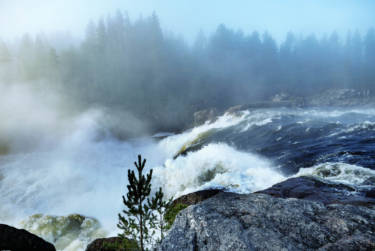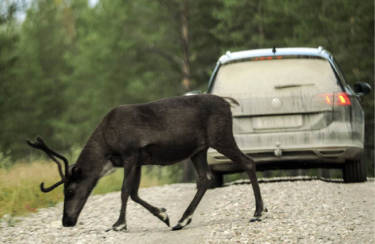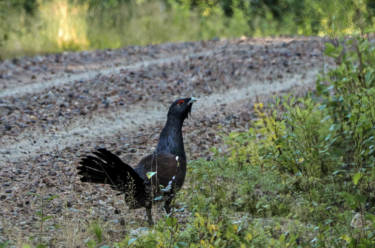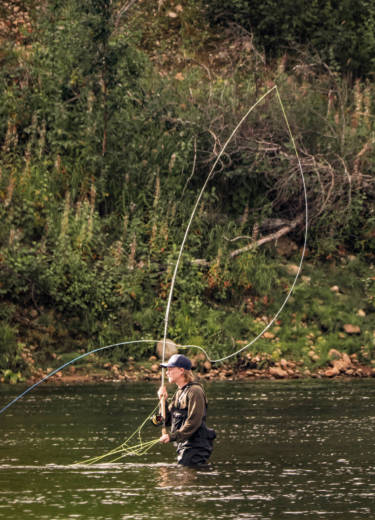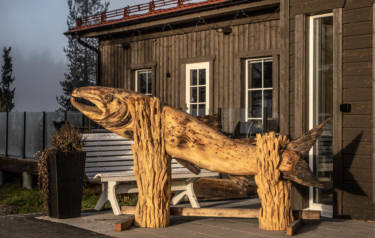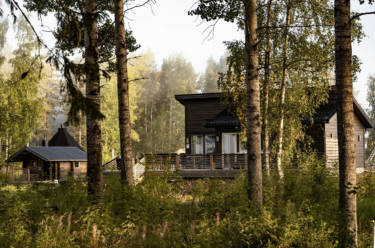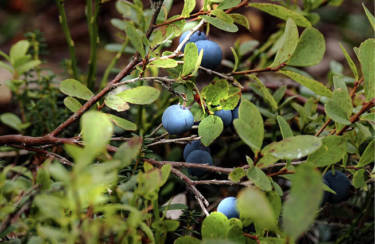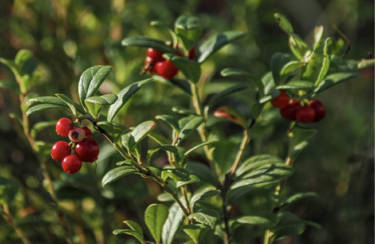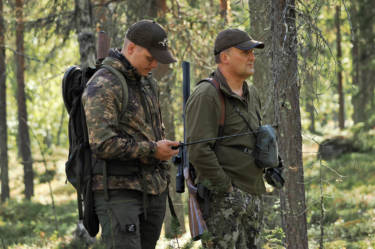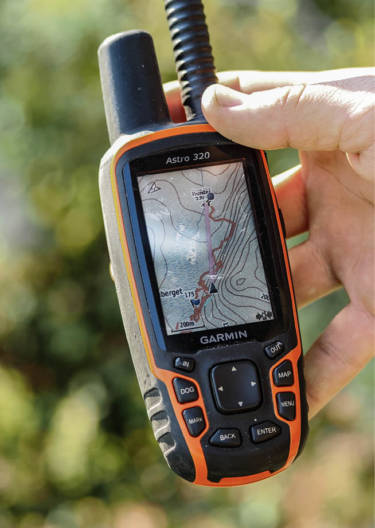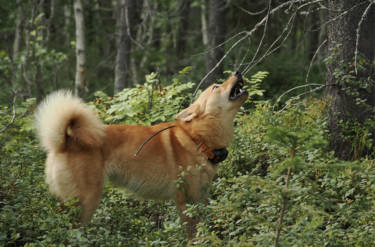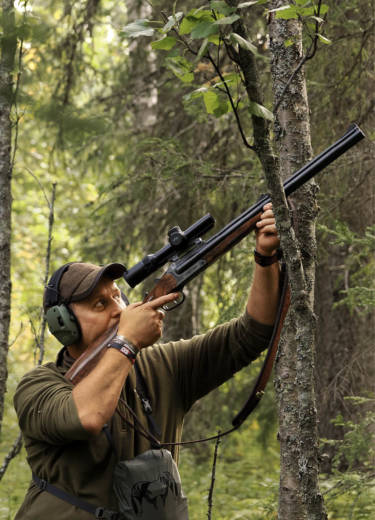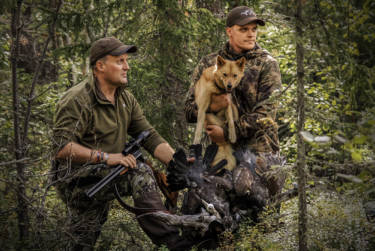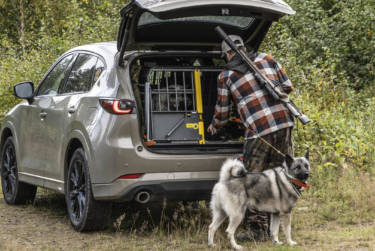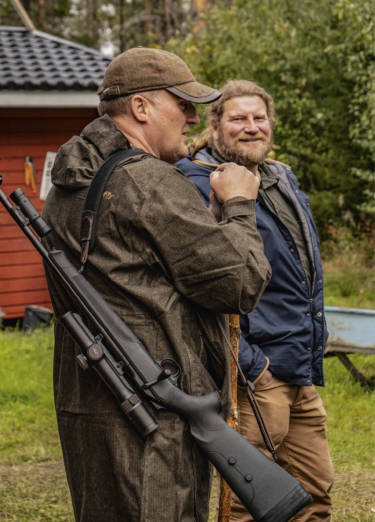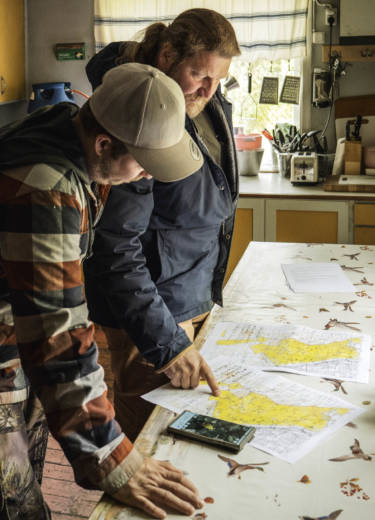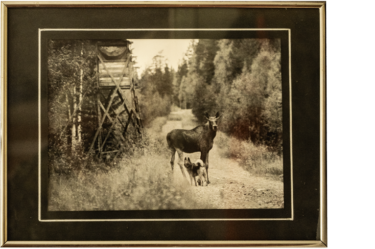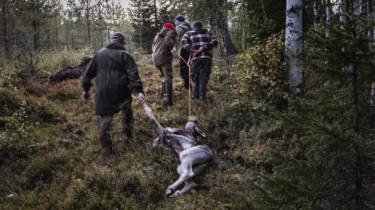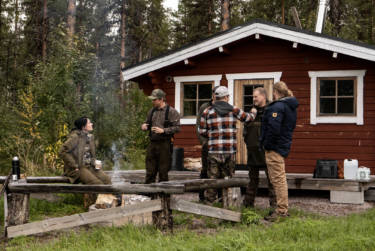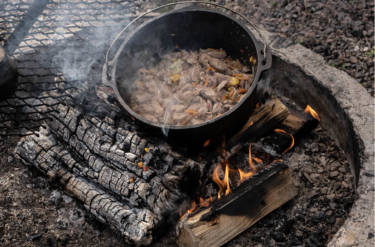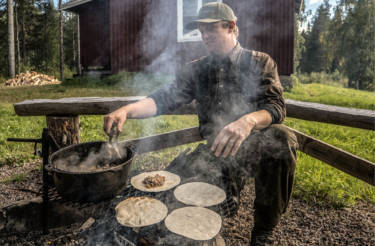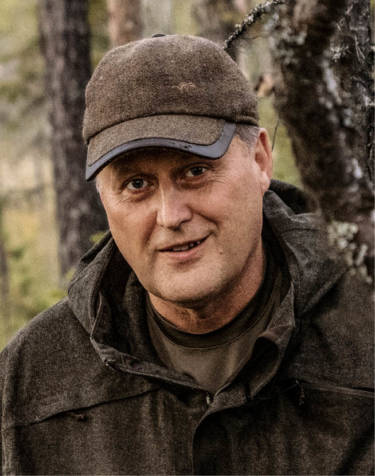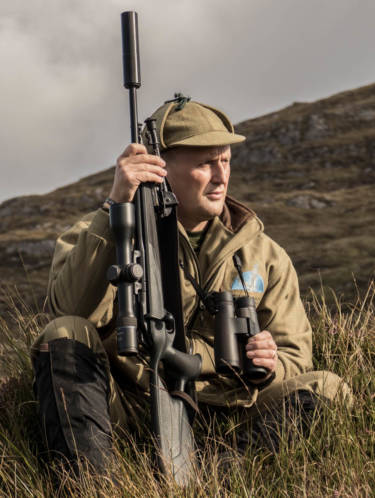We did not have to think twice when David Wright, producer of the “Fieldsports Channel” which is well known beyond Britain, asked us if we wanted to accompany him to take photographs on his film documentary on hunting in Swedish-Lapland. He was able to involve Niall Rowantree, his longstanding friend and proven wildlife expert, in his project that had the aim of introducing us to the local hunting methods and the Nordic hunting culture. Niall has been working as a professional hunter in Scotland for many decades and has hunting experience from all over the world. That made him ideal for the role of the guest hunter who would be hunting elk, wood grouse and black grouse with us.
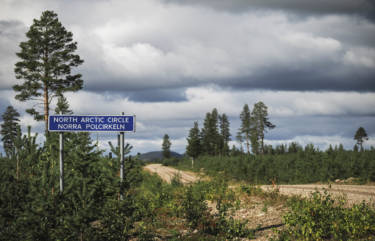
Nordic Hunting
The tourism manager responsible for this Nordic region was our contact and agent for this hunt. He was immediately very enthusiastic about David’s film production and suggested adding fly fishing for salmon to the documentary. It seemed a logical step as the Kalix River runs very close to the hunting grounds. With its good salmon population, it has been attracting eager fly fishers from all over the world. Fishing in this river is highly regulated, though, and there can be a waiting list of several years for the popular river sections. As Niall was nevertheless able to secure a fly fishing permit for salmon, David did not want to pass on this generous offer. The timing was also perfect, as the end of the salmon season in Swedish-Lapland coincides with the beginning of the Elk hunt and the so-called “bird hunt”. That this additional item on the agenda for our hunting trip would not be ideal did not become apparent until we were already on site.
The small town of Luleå is at the northern end of the Baltic Sea and just below the Arctic Circle. As our plane approached to land, we were amazed at how green everything still was at the end of August. While the forests in other areas of this latitude had already turned to shades of yellow or red some time ago, there were no traces of autumn here yet. It was later explained to us that the milder temperatures of the Baltic Sea and the resulting winds are the reason for the later onset of autumn. We started to think that the hunt would not be easy.
At the end of our journey, in a lodge in an idyllic setting on the Kalix River at the edge of the village of Jockfall, our guideRobin then immediately confirmed our assumption. But he had no doubts that Niall’s hunt for elk and wood grouse would be successful. Robin was honest about our poor odds for catching salmon on the last two days of the season, though. Not a problem for us, as we were about to experience the wood grouse hunt from the beginning.
“The countless lingonberries and bilberries are the preferred food source and the main reason for the large numbers of wood grouse and black grouse.”
We knew that this hunt would be nothing like what we are used to from the Alps. While only very few hunters in Alpine regions are lucky enough to ever shoot a wood grouse, things are completely different in Lapland.
Thanks to the vast amount of lingonberry and bilberry bushes, black grouse and wood grouse can find plenty of food here during late summer and autumn. No surprise then that wood grouse are very frequently encountered in these forests. When approached by humans, however, the grouse usually fly off very far, which is why Spitz dogs equipped with GPS transmitters are used in the hunt. These dogs specialize in wild birds and bark to alert hunters to the birds that often sit in trees after fleeing, allowing the hunters to creep up and get in shooting position. What was unusual for us was that, due to the mostly greater distance of 50 to 100 meters, bullets were used instead of the usual buckshot to shoot skywards. It seems that the risk of stray shots hitting an uninvolved party are not a great worry in this extremely sparsely populated region.
As the vegetation was still very lush at the end of August, Niall’s hunt for wood grouse was more difficult than expected. When the dog barked to alert us to the grouse in the trees, it was virtually impossible to spot the birds in the dense vegetation, let alone land a shot. That Niall ended up having double success was more of a lucky coincidence.
A day later, on the last day of salmon season, we drove to a secret spot on the river where our guide Robin hoped we might have one last chance. As Robin’s pride would not have allowed him to fail to present a salmon to cameraman David, he explained that he, as the seasoned expert, wanted to try the salmon fly rod first. And indeed, after one hour he had the first bite. Unfortunately, David was busy with a different shot at the time. When Robin tried to keep the fish on the hook in the water to give David some spectacular images, the salmon got off the hook again and disappeared deep into the river. Unfortunately, we did not get another opportunity.
When we went elk hunting on 1 September, Niall already knew that this hunt in the dense vegetation would be a challenge. Once Robin had released his dog, which specializes in elk, it took several hours until we saw on the display of the GPS receiver that the dog had cornered elks around seven kilometres away. But while Robin conferred with Niall whether to follow on foot or drive around the area in the car, the elk were already moving further away. Soon dog and elk were a good twelve kilometres away, so that we could only follow in the vehicle and on a circuitous route. We all realised that the elk were unlikely to be cornered by the dogs for an extended period of time.
When the hunt was equally unsuccessful on the following day, our tourism manager’s pride was so wounded that he made an unusual decision: He called one of Sweden’s most famous elk hunters in Stockholm and asked him to come to our aid with his highly experienced dog. We could hardly believe it, but this passionate hunter actually got into his car with a companion that same night and set out on the 1800 km journey north. For Niall, David and us, the next and last hunting day ended on a very ordinary note. The new dog had tracked down elk twenty kilometres away and only his owner had been able to follow him in the car and on foot. In the last light, he then reluctantly shot an elk calf. It was easy to believe him when he told us that evening that he had had no other choice. Had he not shot the calf, his dog would likely have continued to follow the cow elk and calf for several days.
Niall as an experienced professional understood this decision very well. He was not bothered in the least that he did not get to take a shot himself. Like all of us, he was mainly grateful to once again have picked up new experiences on a hunt.
We spoke to Niall Rowantree about his hunting experience in the Arctic Circle. Niall is one of the best known professional hunters in Scotland. In addition to hunting, Niall is also responsible for implementing important conservation projects.
Niall, you will be returning home tomorrow morning. Which impressions of Swedish Lapland will you be taking with you?
I am very used to hunting in sparsely populated regions. Initially, I was surprised that there were practically no signs of autumn yet. That’s when I knew that the hunt would be very difficult. But it was really impressive to what lengths our guides went in ensuring that I had a successful hunt. I think their pride simply prevented them from letting me leave without making a successful shot.
What new experiences are you taking with you?
As a professional hunter, I am always outdoors and always thought I wouldn’t miss anything. But when the dog barked for a wood grouse high up in the leafy tree, I almost despaired. My guide Felix usually knew exactly where the bird was, but I just could not see it. You had to be there to believe it. It was only when Felix told me that I should look mainly for the beak that I finally had some success.
Was it difficult to make the shot?
When you finally have the grouse in your sight, it’s not really a problem. What was new for me was that I was hunting with a drilling – the Blaser D99 – for the first time. When stalking, you can feel that is not exactly a lightweight gun, but the slightly higher weight is a great advantage for a precise shot. After all, we did not shoot from a prone position, but only with a rest or even offhand, and a heavy rifle is just a lot better balanced for that.
Did you not get any opportunity to use buckshot?
In late autumn or winter, when there are no leaves on the trees, we would probably have had a good chance of killing even a grouse that was flying away. There is a good reason most people use combination guns for what they call “bird hunting” here. I was told that is why the Blaser Drilling in particular is so popular in northern Sweden.
But you took the Blaser R8 on the elk hunt…
Of course the drilling would have worked as well. But at home in the Scottish Highlands, I have been using the R8 for so many years now that I wanted only the best here as well. Unfortunately it was a little early in the year for elk this time, but I am sure that I will return here one day. Just like Scotland, Lapland has its very own appeal.


